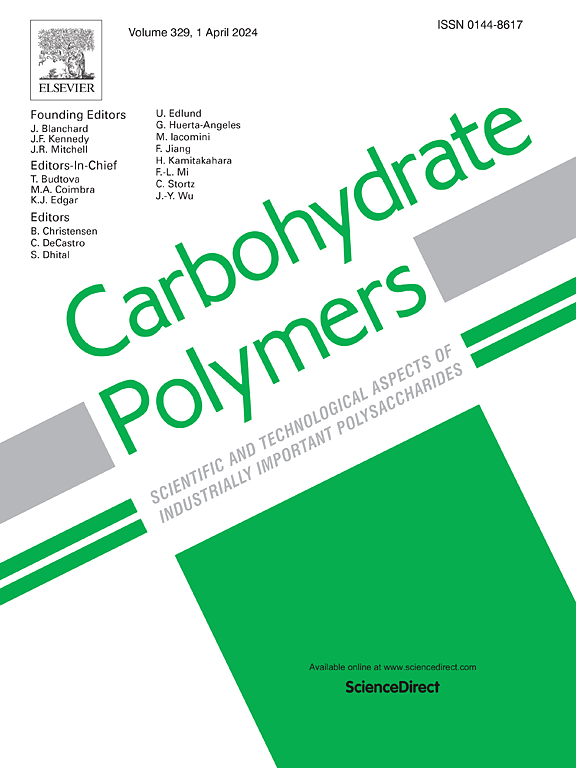Tailoring pore structure in nanocellulose cryogels: Enhancing thermal and electromagnetic interference shielding properties
IF 10.7
1区 化学
Q1 CHEMISTRY, APPLIED
引用次数: 0
Abstract
Engineering porosity levels in hierarchical cryogels presents an exciting opportunity for advancing electromagnetic interference (EMI) shielding materials. This study introduces a feasible approach to tailoring micro-scale morphology in cellulose nanofiber (CNF)-based cryogels by simply adjusting the freeze-templating temperature, resulting in tunable porosity and enhanced performance characteristics. By varying the freeze-templating temperature, we successfully controlled pore size (ranging from 31 to 178 μm), which influenced the mechanical strength (decreasing from 59 to 14 kPa). To explore the effect of micro-scale porosity on the EMI shielding performance, we rendered the CNF cryogels conductivity upon integrating poly(3,4-ethylenedioxythiophene) (PEDOT) with the cryogels framework via chemical vapor polymerization. Our results demonstrate that the larger pore sizes promoted an absorption-dominant EMI shielding mechanism, with an average absorbance (A) of 0.59 across the X-band frequency range. A specific EMI shielding effectiveness (SSE/t) of 4801.25 dB cm2 g−1 was achieved for samples with larger porosities, highlighting the decent performance of these engineered cryogels. Our findings reveal a straightforward yet effective strategy for optimizing porosity to achieve appreciable shielding effectiveness, contributing to the advancement of sustainable, high-performance EMI shielding solutions.

定制纳米纤维素低温凝胶中的孔隙结构:增强热屏蔽和电磁干扰屏蔽性能
本文章由计算机程序翻译,如有差异,请以英文原文为准。
求助全文
约1分钟内获得全文
求助全文
来源期刊

Carbohydrate Polymers
化学-高分子科学
CiteScore
22.40
自引率
8.00%
发文量
1286
审稿时长
47 days
期刊介绍:
Carbohydrate Polymers stands as a prominent journal in the glycoscience field, dedicated to exploring and harnessing the potential of polysaccharides with applications spanning bioenergy, bioplastics, biomaterials, biorefining, chemistry, drug delivery, food, health, nanotechnology, packaging, paper, pharmaceuticals, medicine, oil recovery, textiles, tissue engineering, wood, and various aspects of glycoscience.
The journal emphasizes the central role of well-characterized carbohydrate polymers, highlighting their significance as the primary focus rather than a peripheral topic. Each paper must prominently feature at least one named carbohydrate polymer, evident in both citation and title, with a commitment to innovative research that advances scientific knowledge.
 求助内容:
求助内容: 应助结果提醒方式:
应助结果提醒方式:


